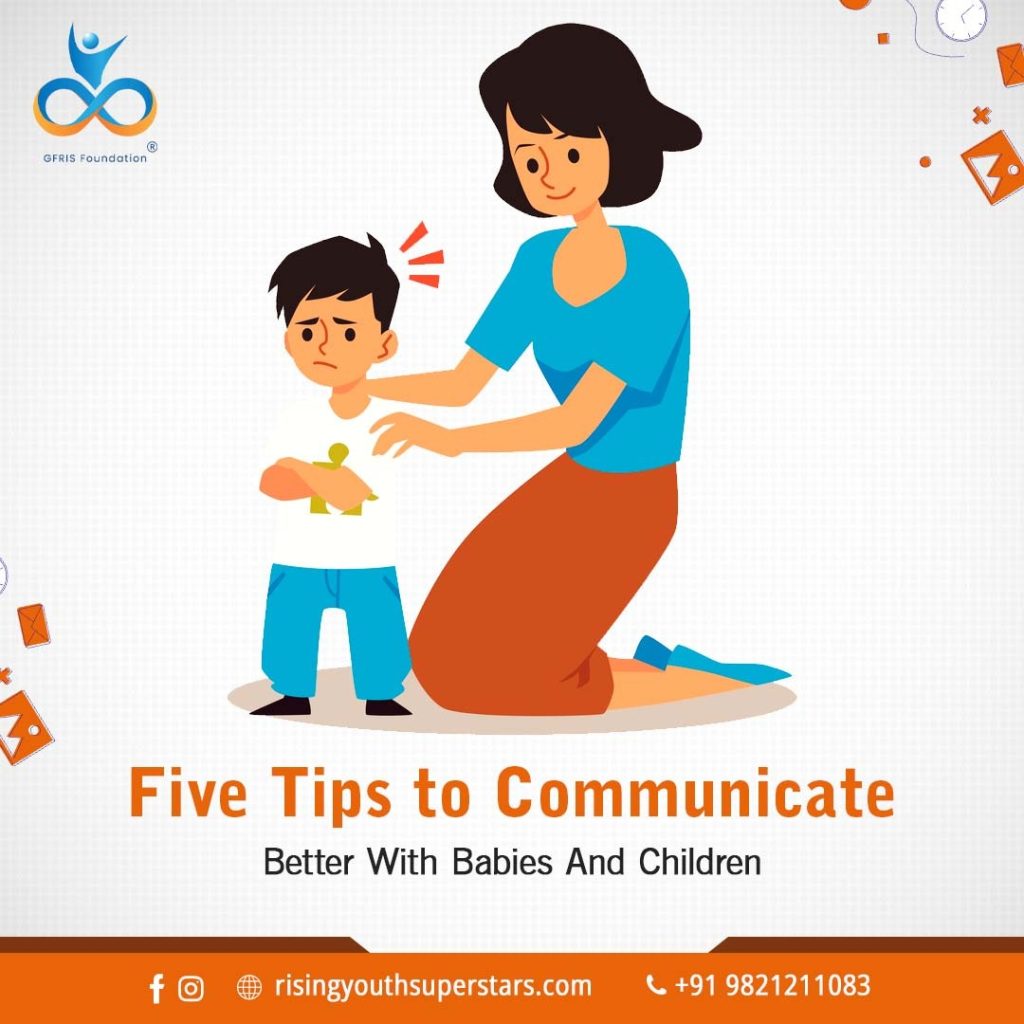Five Tips To Communicate Better With Babies And Children

Good communication between the child and the parent is vital for developing a positive relationship. A relationship with a rock solid foundation makes it easier to talk about difficult topics, as the child grows older.
All interaction with your child is a form of communication. Along with the choice of words, the tone of voice you use, your facial expression, etc., are all ways in which you communicate.
How well you send the message across to your children not only helps them better communicate with others, but also aids them in building healthy relationships in life.
Communication can be both verbal and non-verbal.
Verbal communication refers to the pitch and tone of voice, your vocabulary and language you use to interact with your child.
Non-verbal communication is all about cues passed on through body language – both intentional and unintentional. This includes facial expressions, eye contact, physical touch and hand gestures.
Try these five tips to practice verbal and non-verbal communication:
- Active Listening:
When engaging with your child be sure to actively listen. Doing so makes them feel heard and understood, even if they are babies. Responding to their coos and gurgling sounds lays the foundation for easy communication as they grow.
For older kids, by using gestures such as encouraging smiles and affirming nods you show that you are engaging with them and truly care.
- Have A “Door-Opener” Statement Ready:
When talking with your child use door-opener statements. A door-opener statement encourages your child to say more. It conveys that you are willing to listen as they share their thoughts and feelings.
Some examples of what works as a “door-opener” statement:
- “Wow”
- “Oh.”
- “How about that!”
- “Tell me more.”
- “That’s interesting.”
Children will share with you when they know you are paying undivided attention to them.
- Avoid The “Don’ts”:
It’s a natural tendency for parents to lead with a “don’t” when instructing their kids. The downside of this is it fails to promote the positive behaviour you are looking for and brings out resistance in your child. “Don’t” and other words that cause resistance should be avoided.
Imagine your peers in place of your children when talking to them and swap out the “don’ts” for the “do’s”. Framing sentences positively would look like this:
Replace “It’s cold. Don’t go outside”, with “Please stay inside. It’s too cold to play outside”.
- Talk With, And Not At Your Child:
As your children cross the threshold from baby to toddler, their vocabulary and talking skills improve, and they begin to pepper parents with questions.
At this stage, instead of handing out instructions, engage your child in a two-way conversation. It is a good habit to talk with, rather than at children, because then we let them know that their thoughts and feelings are just as valid as ours.
- Understand That It’s Okay To Apologise:
Apologising may be a hard task for many people, even in situations where it’s required. As a parent, you should keep in mind that children are fragile and their feelings can get hurt easily.
If you end up snapping at your children when they appear to be pestering you while you are busy, immediately make amends by apologising. This sends the signal to your child that everyone is capable of mistakes and it’s important to apologise.
Among the many benefits of an apology from a parent, it helps children mimic this positive trait. Teaching children that an apology matters makes it easier for them to develop empathy. It makes them accept responsibility for their actions and maintain self-control.


Leave a Reply